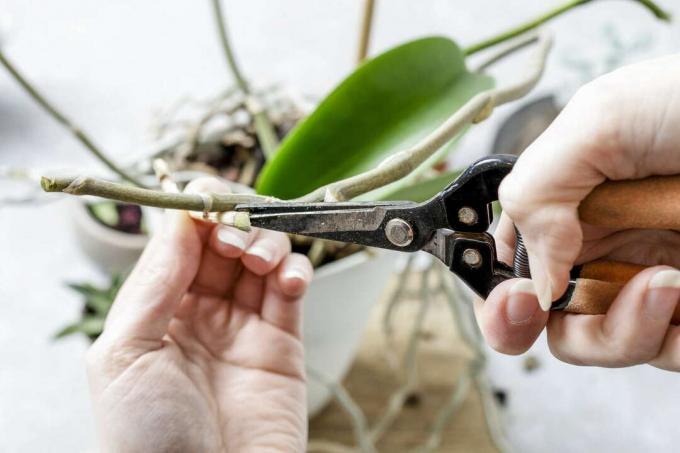Leaves, flower stalks, aerial roots - there is a lot to cut with orchids. But when is cutting helpful and when is it perhaps more harmful?

Orchids after flowering: cut orchid stems properly
Especially for multi-shoot orchids like Phalaenopsis it makes sense to regularly cut off dried flower shoots, as this encourages the formation of new flowers. After flowering, wait and see if more flowers develop. As soon as the shoot has dried up, you can cut it over the second or third eye from the bottom. Cutting parts of plants that are still alive should be avoided, as this is always an invitation for pathogens represents.

Orchids: Cut withered leaves
From time to time it can happen that orchids lose leaves and grow new ones. As a rule, you should not cut off withered leaves with a knife or scissors, but rather wait until they fall off on their own. Alternatively, you can gently press yellow leaves until they fall off. As already mentioned, it is better to keep your hands off healthy parts of the plant.
Orchids: cut aerial roots
If you keep your orchid in a transparent pot, you can always check the condition of the roots without having to remove the plant from the container. This is particularly useful for orchids, as the roots are very sensitive to waterlogging. If your orchid is experiencing root rot or has stunted parts of the root, you should Remove individual roots immediately to prevent further bacterial infection of other parts of the plant avoid.
Orchids: Combine repotting and root cutting
Should be every year or two Orchids repotted to give the aerial roots of the epiphytic plant new substrate and air. This is the ideal opportunity to control the roots and remove diseased and damaged parts. It is best to carry out this step every time you repot to rule out rot in the root area.
